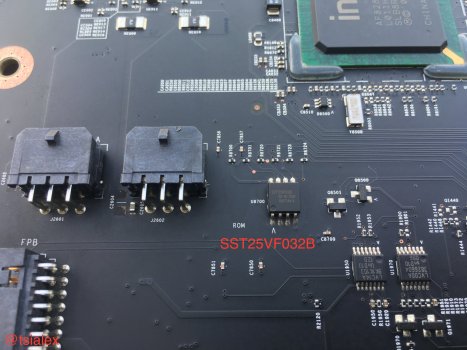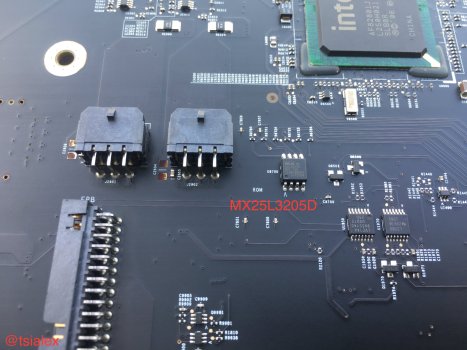EFI Release vs BIOS Version vs BootBlock Version Reference Table:
| EFI Release: | BIOS Version: | BootBlock Version: |
|---|---|---|
| MP41.0081.B03 | MP41.88Z.0081.B03.0902231259 | AAPLEFI1.88Z.0004.I00.0901121311 |
| MP41.0081.B04 | MP41.88Z.0081.B04.0903051113 | AAPLEFI1.88Z.0004.I00.0901121311 |
| MP41.0081.B?? | MP41.88Z.0081.B?? | AAPLEFI1.88Z.0004.I00.0908061259 |
| MP41.0081.B07 | MP41.88Z.0081.B07.0910130729 | AAPLEFI1.88Z.0004.I00.0910130728 |
| MP41.0081.B08 | MP41.88Z.0081.B08.1001221313 | AAPLEFI1.88Z.0004.I00.1001221311 |
| MP51.007F.B00 | MP51.88Z.007F.B00.1008031144 | AAPLEFI1.88Z.0005.I00.1006041028 |
| MP51.007F.B?? | MP51.88Z.007F.B?? | AAPLEFI1.88Z.0005.I00.1007141219 |
| MP51.007F.B01 | MP51.88Z.007F.B01.1008231310 | AAPLEFI1.88Z.0005.I00.? |
| MP51.007F.B02 | MP51.88Z.007F.B02.1009221128 | AAPLEFI1.88Z.0005.I00.? |
| MP51.007F.B03 | MP51.88Z.007F.B03.1010071432 | AAPLEFI1.88Z.0005.I00.1010071430 |
| MP51.0083.B00 | MP51.88Z.0083.B00.1707271620 | AAPLEFI1.88Z.0005.I00.1707271617 |
| MP51.0084.B00 | MP51.88Z.0084.B00.1708080528 | AAPLEFI1.88Z.0005.I00.1708080525 |
| MP51.0085.B00 | MP51.88Z.0085.B00.1802021746 | AAPLEFI1.88Z.0005.I00.1802021742 |
| MP51.0087.B00 | MP51.88Z.0087.B00.1804181525 | AAPLEFI1.88Z.0005.I00.1804181521 |
| MP51.0089.B00 | MP51.88Z.0089.B00.1806081708 | AAPLEFI1.88Z.0005.I00.1806081704 |
| 138.0.0.0.0 | MP51.88Z.F000.B00.1807300628 | AAPLEFI1.88Z.0005.I00.1807300627 |
| 139.0.0.0.0 | MP51.88Z.F000.B00.1808171030 | AAPLEFI1.88Z.0005.I00.1808171029 |
| 140.0.0.0.0 | MP51.88Z.F000.B00.1809191555 | AAPLEFI1.88Z.0005.I00.1809191554 |
| 141.0.0.0.0 | MP51.88Z.F000.B00.1812191621 | AAPLEFI1.88Z.0005.I00.1812191620 |
| 142.0.0.0.0 | MP51.88Z.F000.B00.1902142049 | AAPLEFI1.88Z.0005.I00.1902142048 |
| 144.0.0.0.0 | MP51.88Z.F000.B00.1904121248 | AAPLEFI1.88Z.0005.I00.1904121247 |
Last edited:




